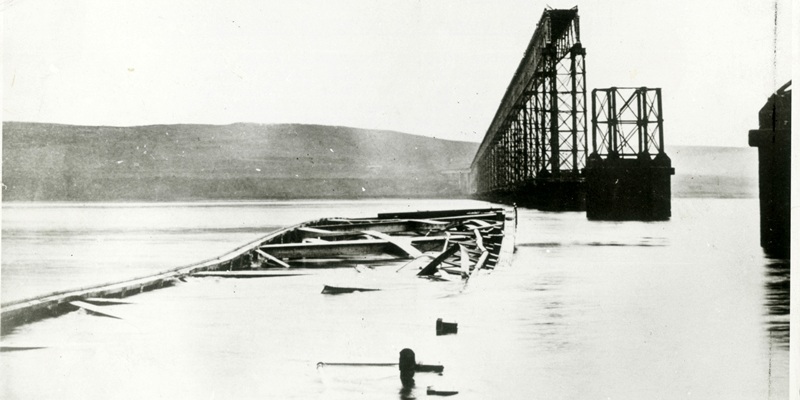A painstaking probe to find out how many people actually perished in the Tay Rail Bridge disaster has reached a figure.
Three local enthusiasts have carried out extensive work on the subject in recent years and, although they have a feeling the true death toll may be higher, the evidence available so far suggests 59 people were lost on that fateful night of December 28 1879, when a train plunged into the icy waters of the Tay when the bridge’s central spans collapsed during a storm.
Newspaper reports at the time and other sources since had suggested 75 people had been killed.
With the two figures being bandied around for decades, Ian Nimmo White, Professor David Swinfen and Murray Nicoll have all been interested in the story for some time and recently visited the the McManus art gallery and museum in Dundee to try to establish a link between train tickets taken on the night of the disaster and the list of passengers who died.
After examining a collage of tickets taken from passengers at St Fort some 10 minutes before the tragedy, which has been loaned from the New Zealand-based descendants of St Fort stationmaster Robert Morris, the intrepid trio have established that 59 people were killed with no evidence to suggest any more may have lost their lives.
Mr Nimmo White explained that only 59 death certificates were made up in St Mary’s in Dundee but said the fact many people were missing with two bodies not washed up until 1880 and the fact that children and rail workers may have travelled without a ticket had confused the issue.
”These death certificates were made up for 46 persons recovered from the Tay and then they had to decide on the bodies they didn’t have,” he said. ”Eventually, they were only ever able to provide information to the satisfaction of all concerned that there were 13 more.
”In the days after the disaster, all the newspapers were suggesting 75 but this was based on an over-rated number of children. As far as we know, only five children under the age of 14 were victims and, although there have been reports of as many as 15 children, I don’t believe it because 10 children just can’t go missing children are looked after and supervised so that doesn’t make sense.
”The difficulty arises where you have people travelling for free on the train. We’ve also got certainly one, maybe more, like George Ness who was hitching a lift to the railway yards in Dundee so he wouldn’t have been purchasing a ticket.
”But we can’t see beyond 59 at the moment and that’s the way it stands. I’ve a feeling there might be more but how do you prove that? We are only in the early stages of our research and we remain open-minded until we get to the point where we can’t go any further.”
The work to establish a definitive death toll is hugely important as work to establish a permanent memorial to the victims continues. The Tay Rail Bridge Disaster Memorial Trust (TRBDMT) is trying to raise enough cash for a tribute in Dundee’s Riverside Drive, but also hopes to have a second on the Fife side of the Tay.
”We’re now beginning to feel that there should be two memorials because the impact was just as great for Fife as it was for Tayside and Angus,” said Mr Nimmo White, who recently helped provide a headstone for the train’s driver, David Mitchell, in Leslie Cemetery.
”We have to put the names of the victims on these memorials and we just felt the argument has never been settled. It’s highly possible that the argument will never be settled and the longer this goes the more difficult it is to research.”
The TRBDMT has raised around £5,000 so far and anyone who wishes to help can find out how at www.thetaymemorial.com.
